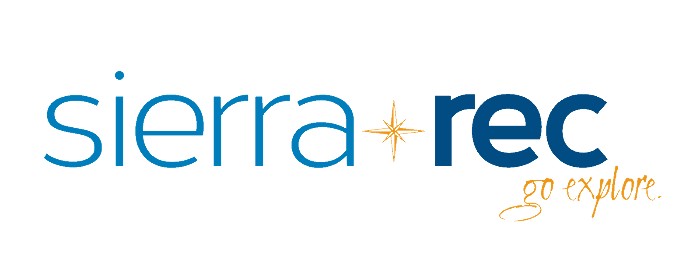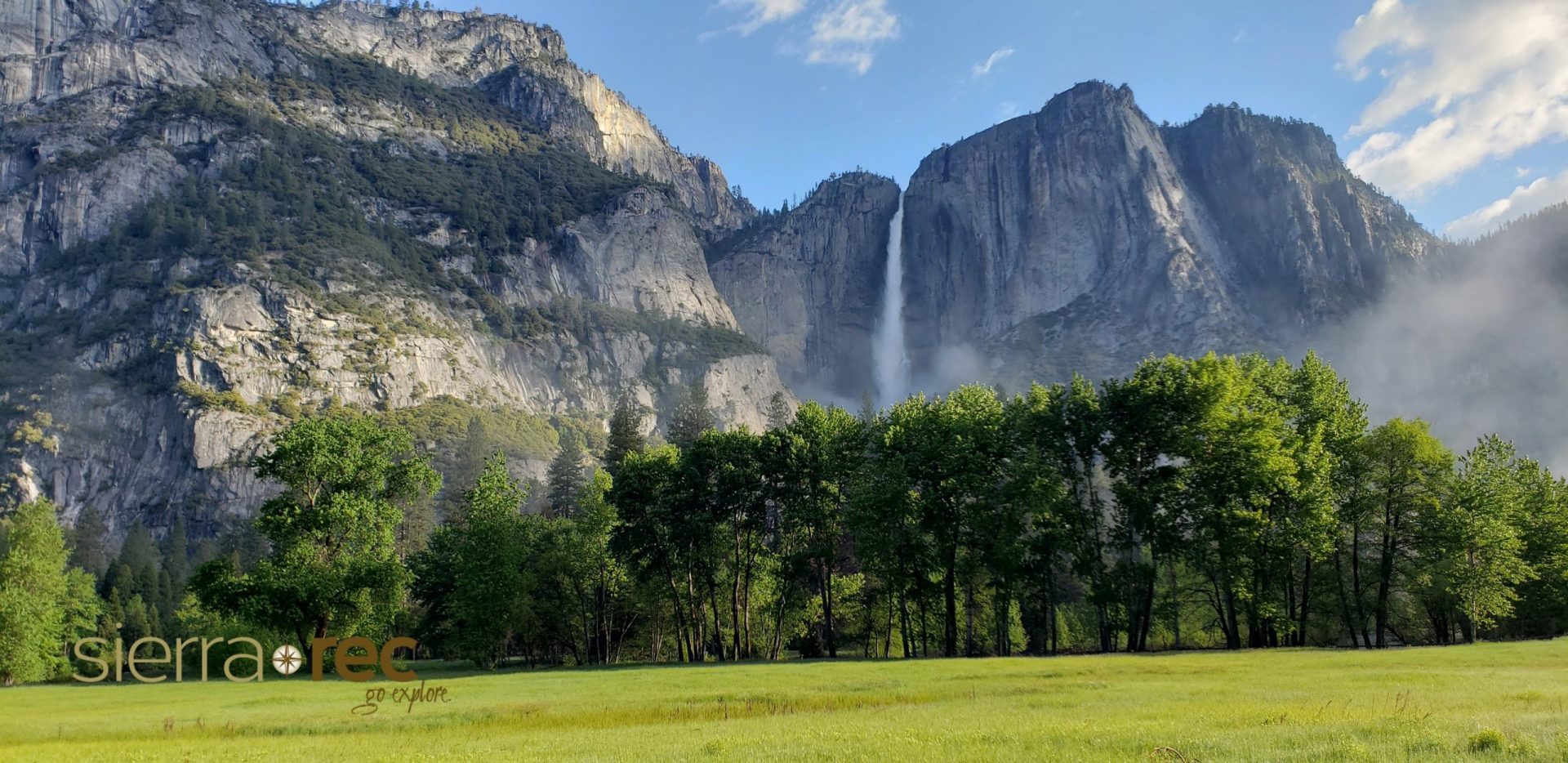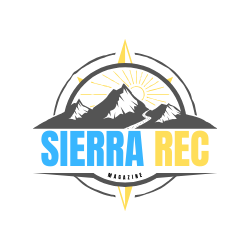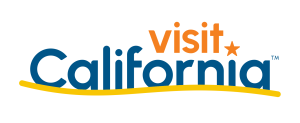National Parks – 1.3 billion allocated to National Parks nation wide. The Greater Sierra National Parks will see approx. 81 million in funding
Sequoia and Kings Canyon National Park- $997,300 – : Lodgepole Campground Water System Rehabilitation
This project is located in the developed area of Lodgepole within Sequoia National Park serving 1,600,000 annual visitors. The project will replace an 8-inch potable water main between the Wolverton water distribution system and the Lodgepole Campground water distribution system—including installation of fire hydrants. The project will also repave the disturbed road surface in the Lodgepole Housing Area parking lot and roadway to mitigate driving and snow removal hazards after the water main is replaced. The project includes two major components, one for turn-key installation of water main and hydrants, including cost of material, and installation including excavation and bedding for specific planned pipe size. Road and parking lot work will include grinding and repaving applications for areas with pipe crossings and/or noted hazards.
Yosemite National Park – $3,708,408 – Rehabilitate the Bridalveil Creek Campground Water Distribution System for Park Visitors
This project will replace the existing cast iron and galvanized steel water distribution system, the existing groundwater treatment vault and chlorination system, and the existing storage tank that has been in operation at the Bridalveil Creek Campground since 1959. This project will address deferred maintenance and maintain regulatory compliance, allowing the campground to continue to provide the necessary quantity of safe water for drinking and sanitation
This campground hosts nearly 40,000 campers annually, and consists of 108 campsites, two group camp sites, and one-horse camp.. It’s the only established campground on the Glacier Point road and is typically open for 90 days per season. There is a major trailhead located at this campground which serves many popular backpacking and day-hikes.The Bridalveil Creek Water System averages 2,000 gallons of water per day and has a daily maximum production of 5,400 gallons to the
campground and day use areas.
The existing 5,000 gallon underground water storage tank is currently not code compliant and will be replaced with a
larger above ground water tank that is designed to meet code requirements and the regulatory requirements of the
California State Water Quality Board, as well as to provide more water storage to meet the peak daily demands of the park
visitors who use these facilities and services
Yosemite National Park -$26,177,634 – Rehabilitate the Tuolumne Meadows Campground to Enhance the Visitor Experience
This project will rehabilitate the Tuolumne campground which includes 304 drive-in campsites, horse camp, backpacker’s camp and a group camp. The campground is seasonally operated and serves over 141,000 visitors per year. The project will rehabilitate campground roads, make accessibility improvements, and enhance the
amenities at each campsite including a hardened parking pad, new picnic tables, fire rings, and food storage containers for
bear protection. The campground has eight restrooms serving approximately 1,200 visitors per day during periods of full
occupancy. The existing historic restrooms will be upgraded to meet Architectural Barriers Act Accessibility Standards
(ABAAS). The entire water system in the campground will be replaced, including new water service to the existing
restrooms and the two new restrooms. The portions of the sanitary sewer system that were not replaced as part of the 1995
sewer improvement project will be replaced in this project.
Yosemite National Park -$9,800,000 -Rehabilitate the Crane Flat Campground to Enhance the Visitor Experience –
This project will rehabilitate the Crane Flat campground loops A, B, C, D, and E roads and 166
campsites to improve drainage, accommodate needed culverts, and reconstruct the roadway. Originally constructed in 1962,
campsites, roads and pullout areas are past their service life and deteriorated. The project will improve vehicle turn-in
alignment and prevent off-road access, construct raised tent pads and improve campsite definition, better accommodate
larger recreational vehicles, and replace campsite signing. It will also improve site grading, improve walks, repair erosion
damage, and revegetate bare areas to protect the down-gradient riparian areas. The rehabilitation will also improve eight
campsites to meet all federal accessibility requirements and provide for accessible paths to the existing comfort stations.
These high-priority improvements will directly benefit the more than 100,000 annual visitors to the Crane Flat campground
by increasing accessibility and improving the condition of deteriorated visitor facilities. The project will reduce the labor
and materials costs currently spent on patching and repairing deteriorated surface materials, reduce the deferred
maintenance backlog, maintain regulatory compliance, and help mitigate the impact of the campground on the natural area
and native vegetation
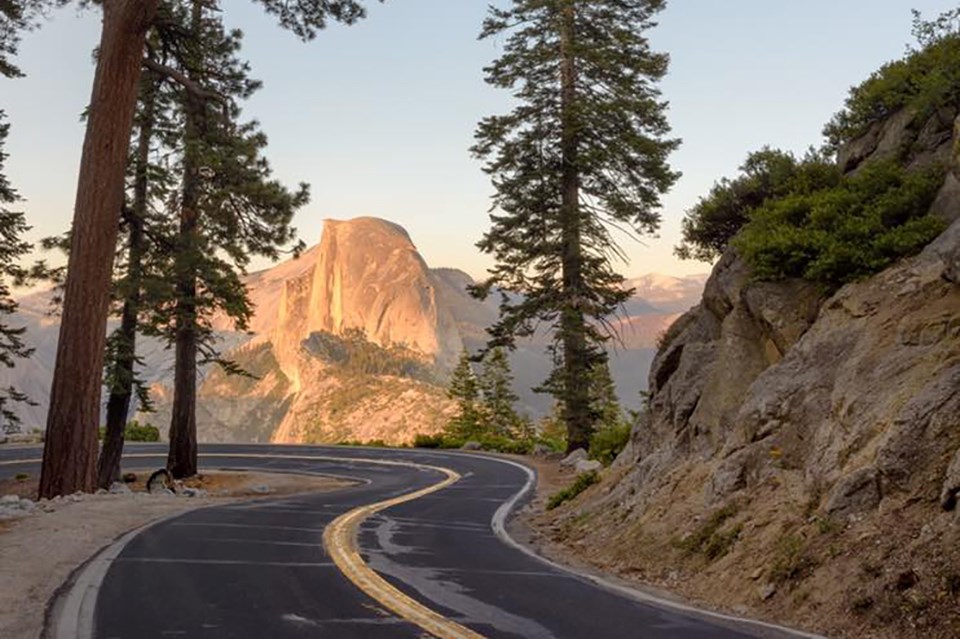
Yosemite National Park – $40,521,000 -Glacier Pt. Rd Rehabilitation
This project will rehabilitate aging and deteriorated pavement, failed drainage structures, failed
pullouts, and parking areas on Glacier Point Road between Badger Pass and Glacier Point. This is one of the five major
roads in Yosemite National Park with an average daily traffic volume of 1,180 vehicles. This road provides the only vehicle
access to the visitor facilities at Glacier Point and Washburn Point, the Bridalveil Campground, the communications
complex at Sentinel Dome, and major trailheads accessing the south-central portion of the 1,169 square-mile park. It also
includes three of the highest accident road segments in the park, and one of the highest accident intersections.
The project will formalize selected pullouts to improve safety and accessibility and remove others where there is insufficient
stopping sight distance or where adverse impacts to park resources are occurring. As needed, road sections will be widened,
repaved, and rehabilitated. The project will also rehabilitate the Sentinel Dome Trailhead parking area, the Washburn Point
Parking area, and the Glacier Point Parking Area. Curbing will be installed west of Washburn Point to eliminate roadside
parking where there is insufficient shoulder width and parked vehicles protrude into travel lanes. Existing paved ditches and
curbing will be rehabilitated. Unpaved ditches will be paved where there is scour, or where needed to provide sufficient
ditch width to accommodate natural run-off from rain and snowmelt. Poor subgrade soils will be excavated and replaced
with stable material that meets the bearing capacity for new pavement structure. Additional treatments will be applied to cut
slopes to prevent erosion and slides.
The project will be coordinated with Bridalveil Campground water project (NPS Legacy Restoration Fund Project #N045).
National Parks and Public Land Legacy Restoration Fund
The Great American Outdoors Act, P.L. 116-152, established the National Parks and Public Land Legacy Restoration Fund (LRF) to address the maintenance backlog of the National Park Service, U.S. Fish and Wildlife Service, Bureau of Land Management and the Bureau of Indian Education.
The Act requires Congress to provide funding for the LRF in each of fiscal years 2021 through 2025 with up to $1.9 billion, or an amount equal to 50 percent of all energy development revenues due and payable to the U.S. government from oil, gas, coal, or alternative or renewable energy development on Federal land and water in the preceding fiscal year. Of the $1.9 billion annually, 70 percent is allocated to the National Park Service, 5 percent is allocated to the U.S. Fish and Wildlife Service, 5 percent is allocated to the Bureau of Land Management, and 5 percent is allocated to the Bureau of Indian Education. The remaining 15 percent is allocated to the U.S. Forest Service.
For fiscal year 2021, the Department of the Interior selected 165 projects for an initial investment of $1.6 billion from the LRF to address critical deferred maintenance projects and improve transportation and recreation infrastructure on national parks, national wildlife refuges and recreation areas, and at Bureau of Indian Education schools.
BLM Funded Projects in or Near the Sierra Nevada
Bishop Ca -$ 315,000 – Pleasant Valley Pit Campground Maintenance and Rehabilitation –
The aging campground and recreation site assets require repairs and replacements to eliminate multiple safety concerns. Work includes replacing 78 broken wooden picnic tables with concrete ADA accessible picnic tables, replacing 78 broken camp-site posts, replacing 40 rock fire rings with ADA accessible steel fire rings to keep campfire size contained, as well as improving the host site and replacing the degraded wooden informational kiosk.
This project would install much need improvements to the Pleasant Valley Pit Campground. The campground is experiencing
increased use as rock climbing and OHV use become more popular at nearby locations. The campground has minimal facilities, but as use increases, the existing facilities are not keeping pace. The existing wood tables are falling apart. In 2018, they were painted and the bolts tightened, but there is no shade, so it is likely they will degrade again quickly. Most campsites have no fire pit, except rocks gathered from nearby. The site posts are falling over and difficult to read. There is no shade, no group gathering area and the host site has no improvements. This project proposes to remedy these problems through:
• Replace 78 wood tables with cement accessible (ADA) tables
• Replace 78 site posts
• Replace rock fire rings with of 40 accessible (ADA) steel fire rings (one for a gathering area)
• Installation of a shade structure at the host site
• Installation of a shade structure at a group gathering area
• Replace existing kiosk
Carson City District -$499,000 – Indian Creek Recreation Area Septic Repairs –
The Indian Creek Recreation area is nearly fifty years old. This project repairs the two aged septic systems and leach fields
associated with the boat ramp restroom and the recreational vehicle restroom at the Indian Creek Recreation Area. Failure to
replace these assets will increase the risk of health regulation non-compliance resulting in the closure of the restrooms to visitor use.
The septic systems are 47 years old and require constant monitoring and maintenance. The condition of the existing clay septic lines and leach field laterals is unknown. Both tanks are pumped annually to ensure they are in working order and overflows do not occur. Continued operation of these assets that are well beyond their life span increases the risk of incurring a notice of violation from the California Department of Health and Human Services if a wastewater overflow incident occurs due to clogged or deteriorated leach lines.
Carson City District – $1,7000,000 – : Sand Mountain Recreation Area Road Safety Repairs
Sand Mountain Road is the sole access to the Sand Mountain Recreation Area, located in the high desert, and includes the Sand Dunes, Sand Springs Desert Study Area, and the Pony Express Station. This project provides traffic flow and safety repairs to Sand Mountain Road. This project will improve accessibility, reduce traffic congestion, and improve emergency medical and law enforcement response access.
This project consists of providing traffic flow and safety repairs to Sand Mountain Road (L2004520). This road currently has a
Facility Condition Index (FCI) of 0.54 in the Facility Asset Management System (FAMS).
This project will
Repair the Fee Booth entry and exit lanes for smoother traffic flow;
Repair the concrete pad at the pay booth;
Repair the four low water crossings to reduce vehicles “bottoming out,” causing road and vehicle damage; and
Grade and add aggregate to the road.
This project will improve accessibility to primitive camping and sand dunes, reduce traffic congestion, and improve emergency medical and law enforcement response. With only a single access road in and out of the recreation area, vehicle congestion becomes a serious issue during the popular holiday weekends and continues to worsen. Vehicles becoming stuck in the sand leads to further congestion, creating a hazard to OHV riders and pedestrians in the camp area. Improving the traffic flow will also reduce congestion and improve access to camp areas.

